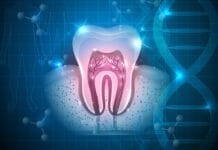The processes of change in dental patient education are associated with the stages of change model. The stages of change, also known as the Transtheoretical Model, offer guidance on the readiness of individuals or groups to change behavior.
The 10 processes of change are divided into two categories ─ experiential and behavioral. An individual can go through each of these processes throughout their behavior change journey. Their mindset evolves over time regarding their behavior or habits. According to the University of Rhode Island, this concept helps us “understand how shifts in behavior occur” when individuals engage in “activities and experiences” when attempting to “modify problem behaviors.”1
Experiential Milestones
The five processes in the experiential category are conscious raising, dramatic relief, environment, social liberation, and self-reevaluation. Individuals experience these five processes in the early stages of behavior.
Conscious raising ─ Another name for conscious raising is increasing awareness. An example can be when a patient recalls what you have said during oral hygiene instruction regarding ways to improve their periodontal health.
Dramatic relief ─ A patient reacts by being worried or emotional after finding out the effects of periodontal disease on their oral condition. Dramatic relief is having some sort of emotional response towards the chosen health behavior being addressed.
Environmental reevaluation ─ Also known as social reappraisal, is when someone reevaluates how their negative or unhealthy behavior affects people around them. The patient needs to be a role model for a child, for example, which involves performing healthier behaviors such as brushing their teeth twice a day. Additionally, that patient would then consider the view that periodontal disease has lasting effects on whole-body health.
Social liberation ─ An example of social liberation is if the patient sees dental hygiene products advertised in mainstream media outlets that encourage better dental care. This can involve how a patient’s environment or society “accept” certain norms ─ in this case, proper home-care habits, oral health, or how our teeth look. Liberation is part of this process in terms of supportiveness, a concept where society/environment (indirectly) supports an individual’s or group’s behavior changes. One example is how society supports tobacco cessation. There are many public service announcements, particularly on television, that show resources and tips to stop the smoking habit.
Self-reevaluation ─ Self-reevaluation or self-reappraisal can be represented as the patient’s poor oral hygiene habits make them embarrassed and self-conscious of their smile. Obviously, self-reflection is a huge piece of self-reevaluation. A person must reflect if they want to make a change and what they will get out of it.
Behavioral Milestones
The behavioral category is comprised of stimulus control, helping relationship, counter conditioning, reinforcement management, and self-liberation. These processes are seen commonly at the later stages of behavior change.
Stimulus control ─ Stimulus control is defined as “re-engineering the environment to have reminders and cues that support and encourage the healthy behavior and remove those that encourage the unhealthy behavior.”2 An example of this is when a patient removes sugary foods and drinks from the household, leaves the new electric toothbrush on the bathroom counter next to the sink (where it is easily seen), and tries to not miss any dental appointments by receiving opt-in text message appointment reminders.
Helping relationship ─ The helping relationship concept is obtaining support from positive influences that promote the individual’s choice to make a behavior change. The patient brushes his or her teeth with a family member every morning and night to continuing with improving their oral health habits.
Hygienists can definitely contribute to the patient’s success through a helping relationship process. Some patients may need more support, encouragement, and motivation than others. Some patients may not even accept our help or listen to the recommendations at first. They may need more time.
Counter conditioning ─ Also known as substitution, counter conditioning means replacing unhealthy behaviors (and mindset) with healthy ones. The patient replaced a manual toothbrush with an electric toothbrush and then brushes daily compared to only brushing sometimes. This also could be taking the needed steps to quit smoking, changing a diet, or keeping routine dental recall appointments.
Reinforcement management ─ Reinforcement management is rewarding or receiving feedback. Additionally, it involves rewarding the healthy behaviors rather than the negative behaviors (or slowly decreasing rewarding negative behavior). An example of decreasing rewarding negative behavior could be reducing the number of cigarettes per day or week. It’s a huge step in the right direction, but that individual is still smoking, which has negative effects on one’s oral health and overall health. The patient can be rewarded by the dental hygienist with a goodie bag with necessary oral hygiene supplies at every visit. The patient is saving money by having an improved oral health condition as well. I also believe that better health can be a reward in itself. We all know that there are huge health benefits to having improved oral health.
Self-liberation ─ Lastly, self-liberation is defined as the commitment to making a change in behavior because they believe it is possible to achieve. Although self-liberation and counter conditioning have similarities, self-liberation involves improving themselves in realistic ways. Counterconditioning is more of replacing behaviors, which in some cases could be unrealistic changes (that piece is not taken into consideration). The patient makes commitments to brush twice a day, clean interdentally once per day, and go to every dental appointment. This is extremely important as well because if the patient has made change initially, they must continue until it is second nature (habit). If there are too many relapses or no follow-through, there can be consequences (and starting all over again).
Our patients and even ourselves may not realize that these processes of change are all around us in and outside the operatory. The experiential processes are very self-reflective in behavior change, while the behavioral processes are taking action steps and following them through. Each process can be essential in being successful in making an actual change in one’s oral health, which then aids in whole-body health!
Need CE? Check Out the Self-Study CE Courses from Today’s RDH!
Listen to the Today’s RDH Dental Hygiene Podcast Below:
References
- Transtheoretical Model: Processes of Change. (n.d.). University of Rhode Island. Retrieved from https://web.uri.edu/cprc/transtheoretical-model-processes-of-change/
- LaMorte, W.W. (2019, September 9). Behavioral Change Models. Boston University School of Public Health. Retrieved from https://sphweb.bumc.bu.edu/otlt/MPH-Modules/SB/BehavioralChangeTheories/BehavioralChangeTheories6.html












